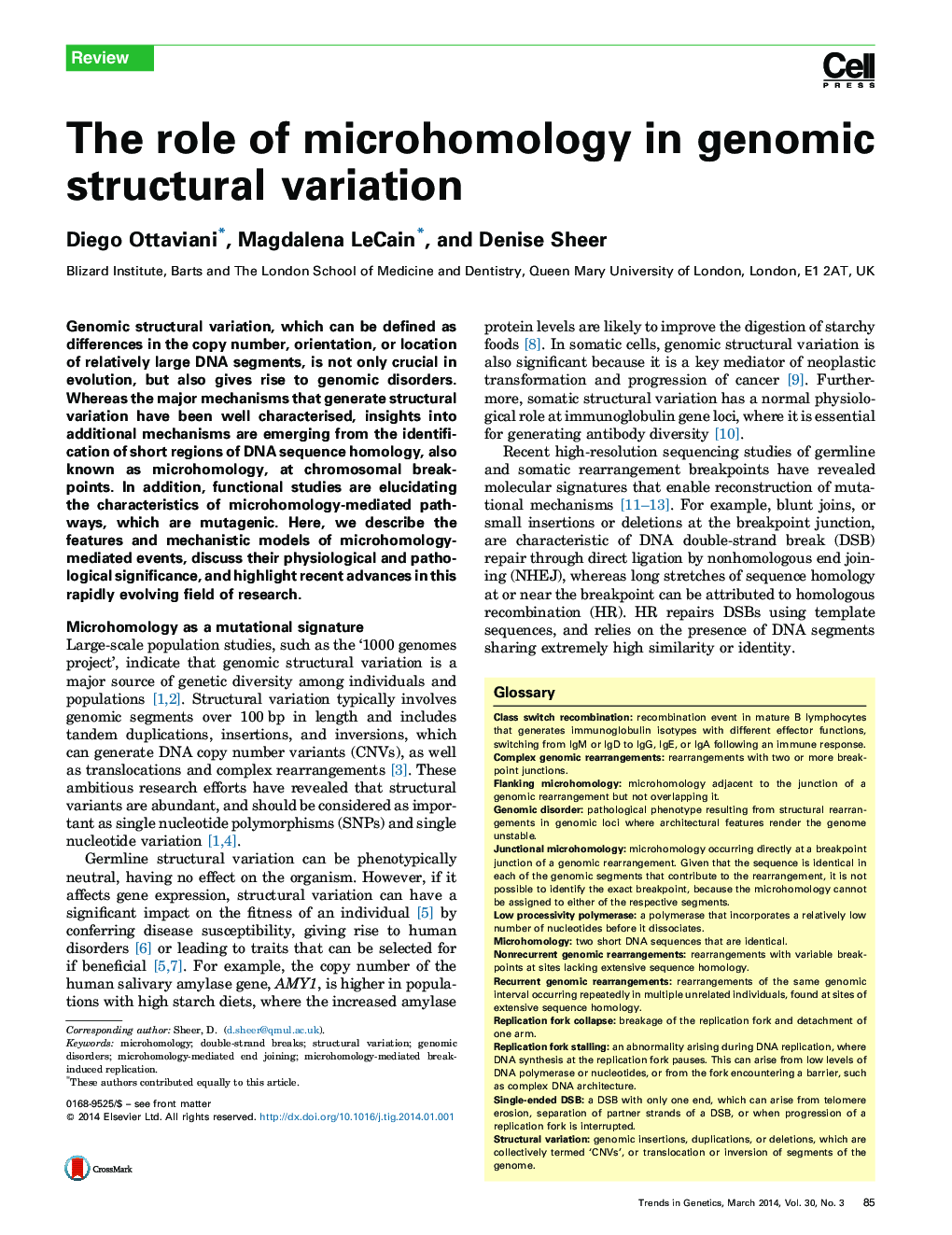| Article ID | Journal | Published Year | Pages | File Type |
|---|---|---|---|---|
| 5913074 | Trends in Genetics | 2014 | 10 Pages |
Abstract
Genomic structural variation, which can be defined as differences in the copy number, orientation, or location of relatively large DNA segments, is not only crucial in evolution, but also gives rise to genomic disorders. Whereas the major mechanisms that generate structural variation have been well characterised, insights into additional mechanisms are emerging from the identification of short regions of DNA sequence homology, also known as microhomology, at chromosomal breakpoints. In addition, functional studies are elucidating the characteristics of microhomology-mediated pathways, which are mutagenic. Here, we describe the features and mechanistic models of microhomology-mediated events, discuss their physiological and pathological significance, and highlight recent advances in this rapidly evolving field of research.
Keywords
Related Topics
Life Sciences
Biochemistry, Genetics and Molecular Biology
Genetics
Authors
Diego Ottaviani, Magdalena LeCain, Denise Sheer,
